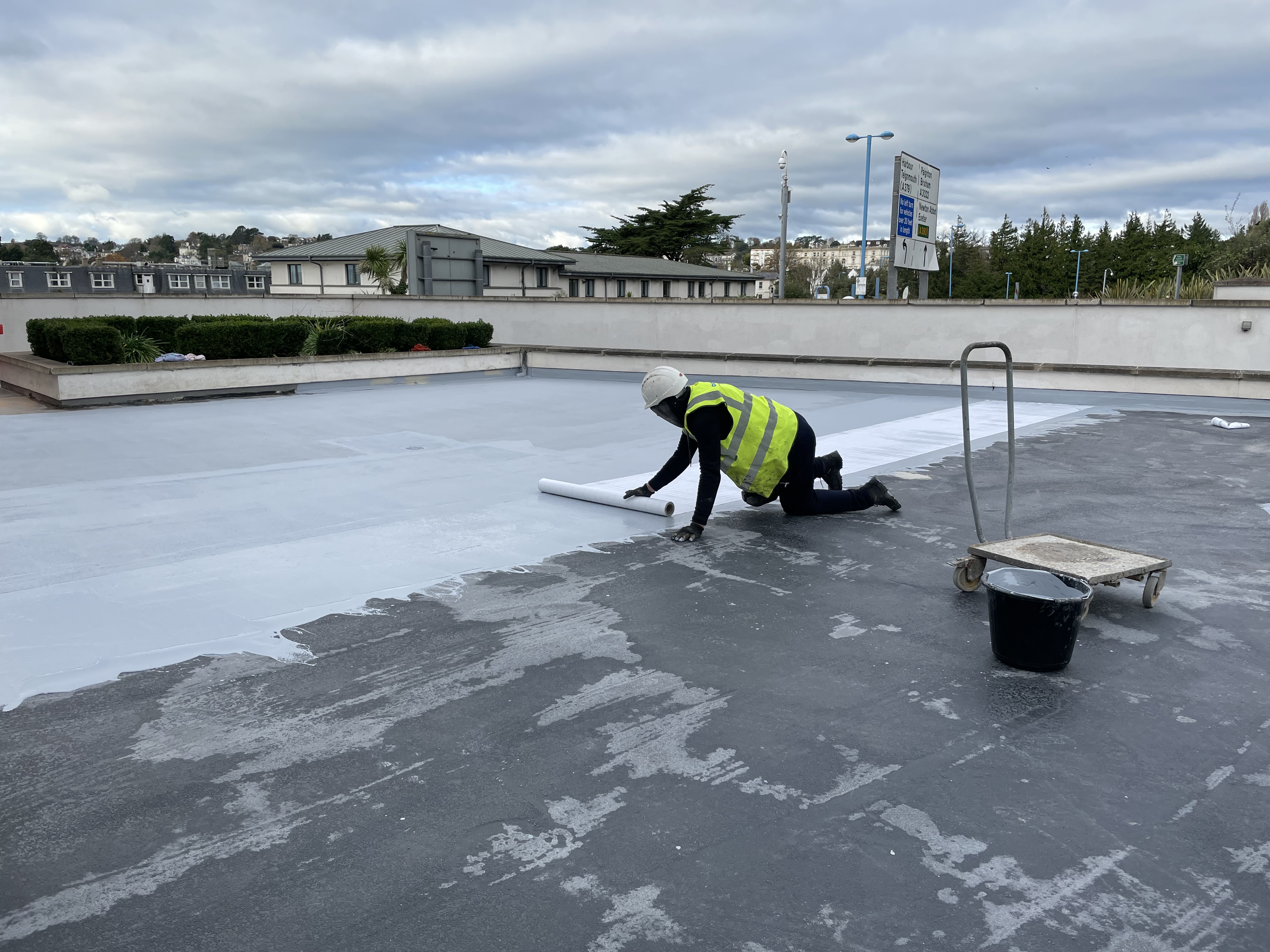Key Considerations When Specifying Multi-storey Car Parks
Within the car park environment, architects and specifiers know that correct specification of waterproofing and surfacing car parks is crucial to delivering a long-term, structurally safe facility for car park operators and vehicle owners. But what do you need to put into consideration?
For new build and refurbishment projects, it is important to address some of the below key questions:
New Build
- What is the substrate?
- If concrete, what finish to the concrete is allowed for?
- Will residual substrate moisture need to be considered at the time waterproofing is installed?
Refurbishment
- What is the substrate and condition of the substrate?
- Is there any contamination?
- Does the concrete need repair?
Specifying New Build Projects
When looking to specify a new build car park construction project, one of the initial decisions is the choice between concrete and screed as the substrate. For instances where a screed is deemed necessary, a key aspect lies in specifying a heavy-duty parking grade screed, suitable to receive the specified waterproofing system.
When working with concrete substrates, what is the specified concrete finish? The best finish to receive waterproofing is a trowel floated finish to good line and level. The first stages of producing a power-float finish are ideal, although polishing the floor is counter-productive as this brings excessive laitance to the surface that would compromise the tensile strength of the bond surface.
It is important to note that the default settings for concrete finishes-brush finish for decks and tamped finish for ramps should be avoided when specifying waterproof coating systems. Both have too coarse a texture and require costly and unnecessary preparation to render them suitable for coating.
Additionally, construction programmes often mean dealing with early age concrete and hence high residual moisture content- it's imperative to assess whether the situation necessitates the application of a liquid damp proof membrane before proceeding with the waterproofing installation. This can only be assessed by rigorous testing of the concrete as the time slot for application of the waterproofing approaches.
Specifying Refurbishment Projects
When considering specifying a refurbishment project, first the nature of the substrate must be assessed. For instance, does the project involve existing asphalt? If so, the condition of the asphalt becomes a key consideration, especially after many years of use and thermal cycling. A thorough survey is essential, and some testing will almost certainly be required to determine, as a minimum:
- The composition of the asphalt-does it comply with specification and is it suitable for overlay?
- What preparation is required to adequately prepare the surface.
- Presence of “mole-hills” (due to expanding moisture either interstitially, or below the asphalt).
- Presence of slumping asphalt at upstands.
- Presence of “dishing” (usually 4 craters where car wheels stand on parking bays-due to the thermoplastic nature of asphalt).
Alternatively, if the substrate includes concrete, an assessment of its condition is important. If it has not been protected, it may have had many years of salt-laden water laying on it leading to high levels of chlorides at the level of the rebar. This presents a risk of corrosion and in such instances, the involvement of a structural engineer becomes imperative, particularly when a comprehensive survey of the car park is conducted prior to refurbishment. This survey may involve critical concrete repairs and the implementation of corrosion control measures, over and above the installation of the waterproofing.
Preparation work within such projects may need to be more aggressive to eliminate any contamination, damages, and existing coatings or line markings. While methods like vacuum recoverable blast tracking exhibit a non-intrusive environmental footprint, it's crucial to consider the potential impact of noise, dust, and vibrations associated with this type of work.
Full Waterproofing System
- Exposed car park decks
- Partially exposed decks
- Exposed ramps
When specifying liquid membrane waterproofing for car parks, it’s good to remember that failed deck joints and surface waterproofing can cause severe maintenance problems for owners of multi-storey car parks and can lead to leaking of surface water to the decks below. This in turn causes corrosion of the steel reinforcement and compromises the integrity of the structure. Therefore, you would specify full waterproofing on any decks which are fully exposed to the elements. But also, you may have a multi storey car park built over retail, commercial or residential areas. This level may not be directly exposed to weather, it is crucial that they do not have water ingress to the levels below.
Full Fleece Waterproofing systems
- Decks over retail, commercial or residential space
- Podium decks
- Areas with high risk of cracking
Many designers and developers consider it prudent to engineer the solution in a risk-adverse way to make sure that no water, chemicals or other liquids will leak through from the overhead car park by using a fully fleeced system. This is achieved by installing a fully reinforced crack-bridging deck coating solution in the car park level that has been reinforced with a fleece. Incorporating a fleece within the floor enhances it with a cohesive and tear strength that is higher than the bond strength to the primed substrate so that in the event of any excessive movement, the system can spread the stress and accommodate it across the widest area. This method provides the utmost in protection, stopping any liquid penetration to the deck or occupied premises below. In terms of EN1504-2:2005 Products and Systems for the Protection and Repair of Reinforced Concrete Structures Part 2. Surface Protection Systems for Concrete, the reinforced membrane system should meet EN 1062-7:2004 Method A (static)-A2 and Method B (dynamic)-B4.2.
If you have intermediate decks of a car park or an underground car park which is not directly exposed to the elements, you may choose a more cost-effective way of protecting the concrete. It is a very similar build up to the full waterproofing system and achieves most of the functionality and appearance, but without the membrane.
Sustainability
Sustainability is another crucial consideration for architects when specifying refurbishment or new build multi-storey car park structures. This can include the use of environmentally friendly materials, such as recycled steel or locally sourced materials, as well as the incorporation of green features such as solar panels or rainwater harvesting systems. These measures not only help to reduce the environmental impact of the car park, but they can also lead to cost savings in the long term.
We understand that correct product selection for your car park design is crucial and that’s why our Specification team are on hand to provide you with a comprehensive consultancy service for your projects. Whether it is new build or refurb, our team have a wealth of experience in waterproofing and can support you at every stage of the process from product selection to on-site support.
You can also Register for our CPD webinar on The Importance of Waterproofing Car Park Structures.
Why not get in touch with one of our car park decking specialists? Find out more here.










